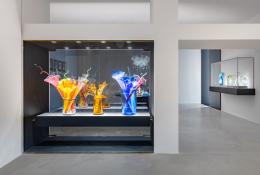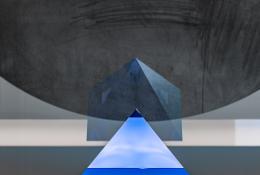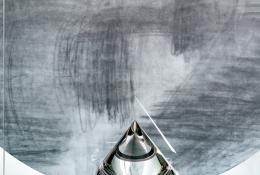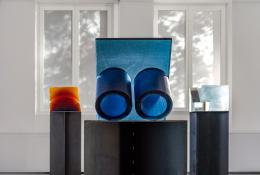BOHEMIAN GLASS: THE GREAT MASTERS
Bohemian Glass: The Great Masters
The exhibition Bohemian Glass: The Great Masters curated by Caterina Tognon and Sylva Petrová and organized in collaboration with the Museum of Decorative Arts in Prague, is dedicated to Bohemian glass after the Second World War, featuring the works by six major artists of contemporary glass sculpture: Václav Cigler, Vladimír Kopecký, Stanislav Libenský and Jaroslava Brychtová, René Roubíček, Miluše Roubíčková.
Bohemia — the historical name for the largest of the lands that make up the present-day Czech Republic — was home to glassmaking innovators from the twelfth century onwards, who helped shape and augment the impact of European glass. Glassmakers based in this region were permanently pushed to invent new forms of glass production by competitive pressures from other European glassmaking centres, primarily in Germany and also in Italy, whose superb outputs dominated the global market in decorative glass.
This major historical connection between European glassmaking centres came to an abrupt end in 1948, when then-Czechoslovakia was overpowered by the Communist regime. Until 1989, the country’s borders were practically sealed off, denying free trade, travel, and communication with the western sphere, greatly impacting the local glass industry. Even so, the Communist regime presented itself abroad with the results of Czech glass-making efforts at large international exhibitions and world’s Expos.
Bohemian Glass: The Great Masters presents the works of leading figures in the Czech glassmaking scene who lived through turbulent societal upheavals because they had been born in the Czech lands in the 1920s and 1930s. These artists endured the largest-ever military conflict in Europe, followed by a brief respite of freedom and democracy, only to be plunged into totalitarian domination in 1948, which they could finally shed to return to standards of European democracy after 1989. It is remarkable that, despite all the negative effects caused by the absence of freedom and prosperity, they managed to overcome these challenges and grow their art in the broader context of the development of certain artistic disciplines in erstwhile Czechoslovakia. These were artists who initiated and nurtured a relatively “new” mode of glassmaking, “artistic glass” which was not intended for mass production. The works they created were unique, as in the case of traditional artistic disciplines such as sculpting or painting, while drawing on the specific characteristics of glass.
The show closes with photographs by Josef Sudek (Kolín 1896-1976 Prague) from the ‘Glass Labyrinths’ series, taken within the exhibition ‘Contemporary Bohemian Glass’ which was held in Prague in 1970 at the time of the 5th congress of the AIHV – the Association Internationale pour l’Histoire du Verre.
Click here to access the virtual tour of the exhibition.




























